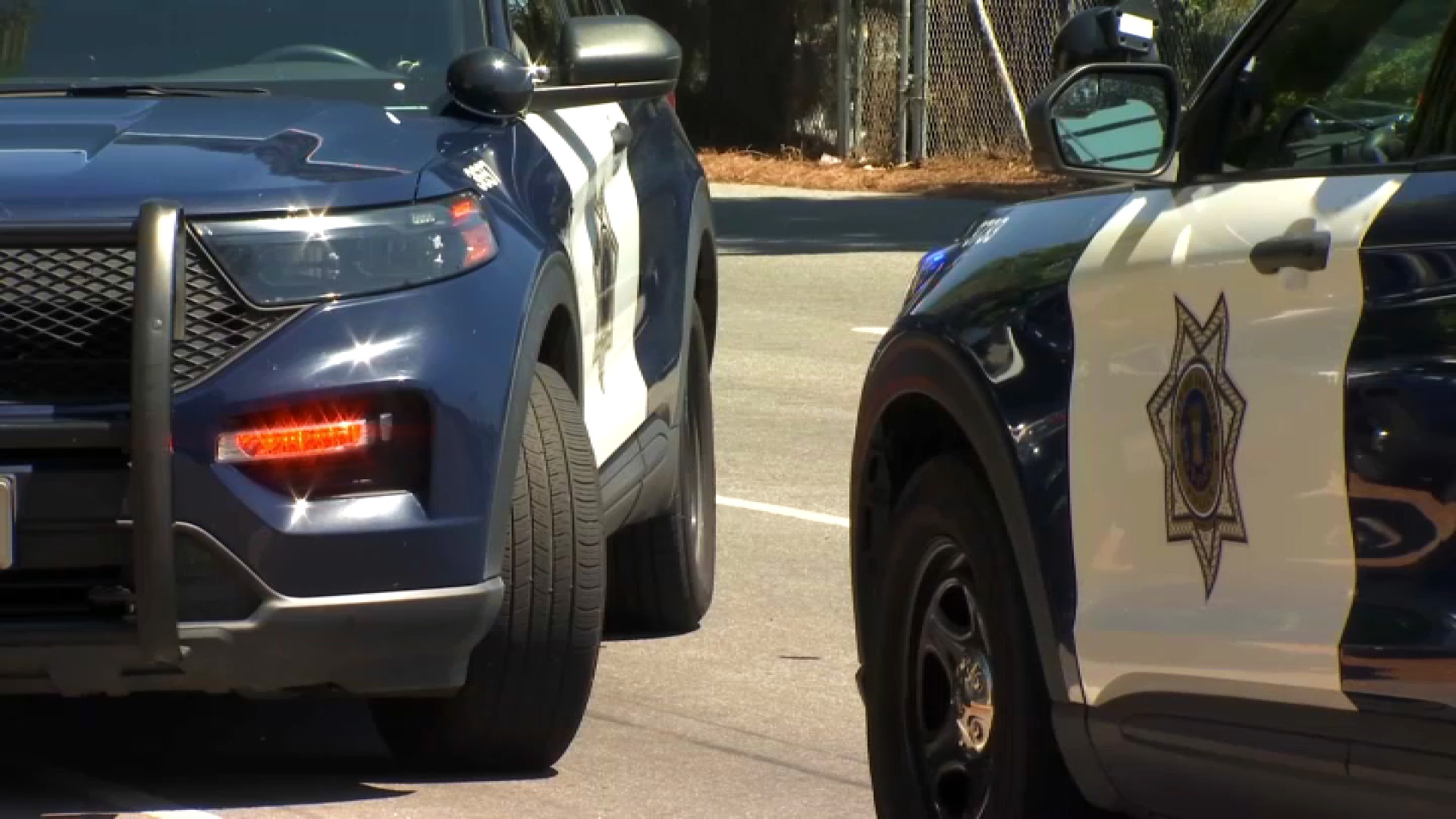Investigators gathered evidence Wednesday to determine what caused an empty oil tanker to clip a tower support of the San Francisco-Oakland Bay Bridge while a lawyer for the ship's pilot called any speculation that his client was at fault "highly premature.''
The 752-foot Overseas Reymar scraped a 30-to-40-foot section of a protective fender from the tower at about 11:20 a.m. Monday while pilot Guy Kleess was in charge of taking the tanker out beyond the Golden Gate Bridge.
NBC Bay Area has learned an important navigational tool called Racon is part of the focus of the investigation. There are three Racon transponders on the Bay Bridge. They help mariners travel safely between the concrete bridge towers.
Radar triggers beam in racon and racon sends signals back out again and displays a flash on the radar system. When bar pilots are approaching the Bay Bridge they aim for that signal. We obtained documents indicating at least one Racon was not working with the oil tanker hit the bridge.
On the Coast Guard weekly local notice to mariners racon B on the Bay Bridge was listed as inoperable. The Coast Guard said this list was released Monday, the day of the accident. The tanker hit the Echo Tower, investigators will now have to figure out if the two closest racons were working or not. In a Tuesday summary from the vessel traffic services says Racon B and Y are not operating.
The U.S. Coast Guard said in a statement Wednesday that the ship had been warned it was off course. But the Coast Guard refused to disclose what time the warning was given or release a recording of the conversation between the ship and the Vessel Traffic Service, which monitors the movement of all large vessels on the San Francisco Bay. Coast Guard spokesman Dan Dewell said investigators will examine the recorded conversation between the 752-foot Overseas Reymar and a dispatcher with the service, along with a host of other factors.
No further details about the warning will be released until the investigation is complete, he said.
Local
The pilot's lawyer, Rex Clack, said investigators are still gathering facts about the accident and have not speculated about a cause. He said Kleess is cooperating. ``None of the government investigators has pointed fingers at any specific source as a cause,'' Clack said in a statement Wednesday.
"And there are many potential causes for investigators to study, such as mechanical failure aboard the Overseas Reymar, faulty navigational devices, unpredictable fog conditions, the actions of the ship's bridge crew, water currents and tides, and other possible sources.''
In a phone interview, Clack declined to discuss any details, including the nature of the conversation between the Vessel Traffic Service and the tanker. Mariners and others say the Vessel Traffic Service is a form of air traffic control with one crucial distinction: Its communications are advisory rather than mandatory like air traffic control.
So "warnings'' from the service are often phrased as questions rather than direct statements of danger.
"They are not there to order captains around,'' said Capt. John Konrad, a veteran operator of large ships who now operates the respected mariners website gCaptain.com. ``They'll ask a lot of questions.''
Konrad and others said expansion of the authority of the service was debated after the cargo ship Cosco Busan unleashed a massive oil spill when it crashed into the Bay Bridge in 2007. But little change resulted because the service only monitors large ships. ``Mariners like me oppose giving them that much authority,'' Konrad said.
"Unlike air traffic control, VTS doesn't know where every small boat on the bay is. They may say turn right not knowing there's a sailboat there.'' Jeff Bornstein, a lawyer who represented Capt. John Cota, the pilot of the Cosco Busan, said the service asked "what are your intentions'' as the ship steamed for the center of a tower.
Bornstein said if the service had issued an explicit warning, Cota may have had time to change course and pass under the bridge safely. Instead, Cota said he planned to maintain course without opposition from the service, realizing too late that he was misreading onboard instruments.
Still, Konrad, Bornstein and others warned that no conclusions can be made until the Coast Guard releases the recorded communications with the Overseas Reymar. Bar pilots are required by state law to guide every large vessel in the San Francisco Bay and other Northern California waterways.
Kleess lost his pilot license between Nov. 9, 2010, and Jan. 11, 2011, after going on medical leave, state Board of Pilot Commissioners records show. Charlie Goodyear, a spokesman for the bar pilots association, declined to divulge the details of the medical leave.
Records also indicated Kleess was involved in three previous accidents. He was held responsible for two and ordered to undergo more training after a ship he was piloting damaged a dock in Stockton in 2009, according to board records.
The medical fitness of pilots became an issue after Cota was found at fault for ramming the Cosco Busan into the Bay Bridge. Federal investigators concluded that Cota withheld vital medical information from regulators, and that one of the factors in that crash was Cota's use of prescription medication. Kleess' attorney characterized the previous accidents as ``minor incidents'' and said Kleess has a "good record'' as a pilot.



